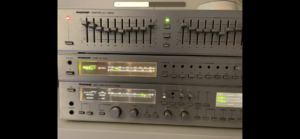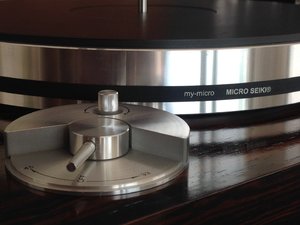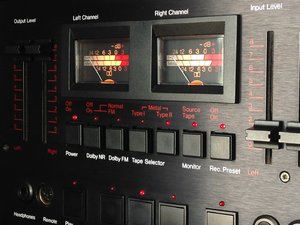Photoelectric paper tape recorder
In 1932, after six years of developmental work, including a patent application in 1931,[3][4] Merle Duston, a Detroit radio engineer, created a tape recorder capable of recording both sounds and voice that used a low-cost chemically treated paper tape. During the recording process, the tape moved through a pair of electrodes which immediately imprinted the modulated sound signals as visible black stripes into the paper tape's surface. The sound track could be immediately replayed from the same recorder unit, which also contained photoelectric sensors, somewhat similar to the various sound-on-film technologies of the era.[5][6]
Mere her
In 1932, after six years of developmental work, including a patent application in 1931,[3][4] Merle Duston, a Detroit radio engineer, created a tape recorder capable of recording both sounds and voice that used a low-cost chemically treated paper tape. During the recording process, the tape moved through a pair of electrodes which immediately imprinted the modulated sound signals as visible black stripes into the paper tape's surface. The sound track could be immediately replayed from the same recorder unit, which also contained photoelectric sensors, somewhat similar to the various sound-on-film technologies of the era.[5][6]
Mere her

















